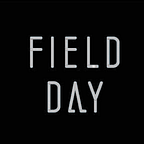Plenty of “Siftr-ing” and Winnowing at UW Madison classes this semester
Students in the Wisconsin Idea class cheered when they learned that instead of writing several essays, they would complete a weekly “Wisconsin Passport” Siftr and Twitter challenge.
Siftr, an app developed here at Field Day Lab, is designed to help people visually track their observations as they explore the world. Siftr is still in its Beta (pre-release) form, but many people have already found fun ways to use it as they explore their communities. We’re thrilled to see projects happening with Siftr right here at the UW Madison campus.
Margene Anderson, who is teaching the freshman Wisconsin Idea course this semester, developed an assignment incorporating Siftr to help students slow down and discover the campus. The class is designed to introduce freshmen to college and help them become familiar with Madison and Wisconsin culture. Using Siftr and other social media, the weekly Wisconsin Passport assignment is designed to push the students to do and discover new things.
“I want to harness that college curiosity, to help them really think about their future. To find new things to do both on and off campus,” Margene explained. “This assignment, along with the weekly discussion, will help them be part of the UW community. It is an intentional way to build and share culture.”
Siftr works well for classes like Margene’s because it’s organized around ideas rather than friend networks. For instance, a teacher can design a Siftr with categories that align with the concepts being explored as part of the curriculum. Instead of encountering these categories while sitting in a desk, the student experiences them in the field.
Margene is creating a new Siftr theme each week this semester. As the students contribute related photos and captions to the Siftr, a new map organized around that specific theme is generated. The students — and you, too — can look at campus through a new lens thanks to these maps.
Initially, Margene considered creating a scavenger hunt to familiarize students with campus. But she decided that using Siftr would result in deeper learning — instead of just filling in the blanks with a scavenger hunt of things she thought were interesting, students would go out and think about what is interesting to them.
The first Siftr Margene assigned to the students was to notice and photograph a plaque that piqued their curiosity.
*Siftr Assignment: UW-Madison is rich with history of academic achievements, life saving discoveries, and important historical and ecological areas. Your first job is to find a plaque or commemorative, take a picture, and place it on the map! Tell us why you thought it was significant to you.* Check out this Siftr Project!
“The more the students explore and research, the more it contributes to their learning,” she says. “Learning is about who is doing the thinking and making meaning. Student-centered education takes a lot of work and trust in the students; we learn by constructing knowledge.”
When Siftr is used in a classroom context, it can help the students and teachers get to know each other in new ways as they are able to see how each other sees the world.
“It’s also interesting to see how the students travel around campus. We get to experience different perspectives. Like this one, from a student athlete,” Margene said, pointing to an image at the tip of Picnic Point, the only photo not clustered near their classroom by Bascom Hill. “He was motivated to take this photo here because he enjoyed running. Another student added exclamation points in his caption about the first US radio, built at the UW. It makes me want to know why he’s so excited about this.”
As support staff for the University, Margene is also interested in this “on the ground” experience with the Siftr app so she can better assist other faculty.
In fact, after chatting with Claudia Calderon about how she was developing a detailed glossary of tropical horticulture in Central America, Margene suggested Siftr instead. Now, Claudia will assign her Tropical Horticulture students to use Siftr while they’re in Costa Rica and Nicaragua to create the glossary themselves as they learn first-hand about plant origins.
Siftr went global with a UW-Madison MOOC called “Forests and Humans.” Participants in the class took photos of trees that were important to them and shared why. With more than 500 photos of trees and hundreds of “likes” and comments on the photos, participants lit up the Siftr map from the Midwest to Madagascar!
“Crowd sourcing is critical to increasing collective knowledge,” Margene says. She’s excited about the many uses of Siftr — on or off campus — because “it’s fascinating to look at what things people are paying attention to and why.”
We agree!
What might Siftr help you to stop, slow down, and explore?
